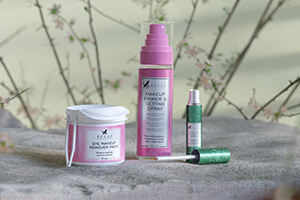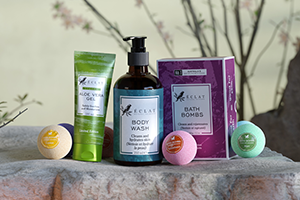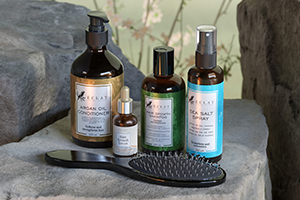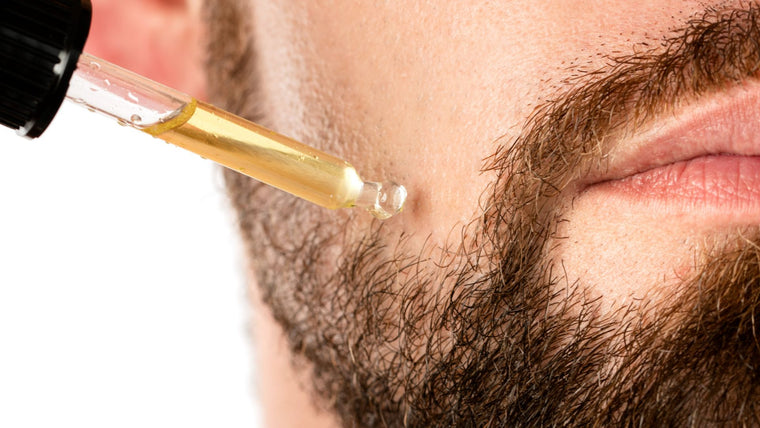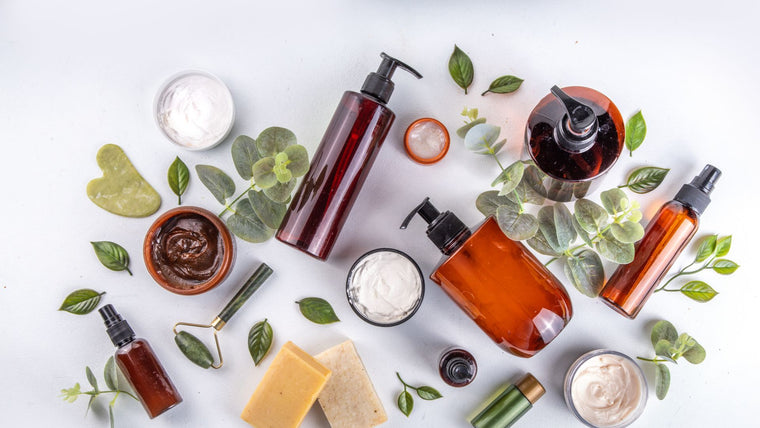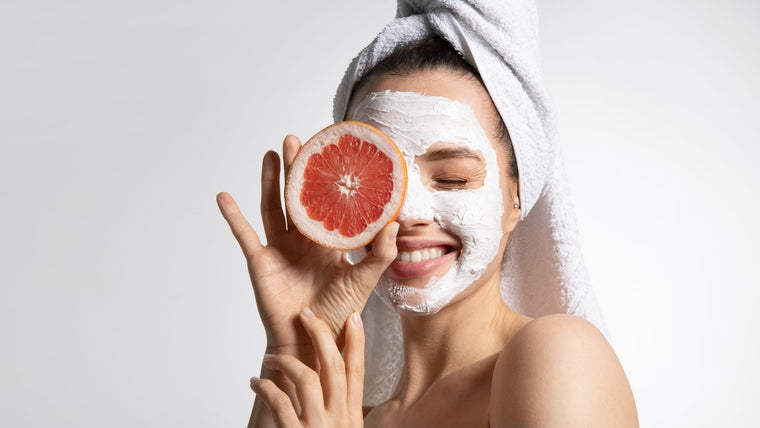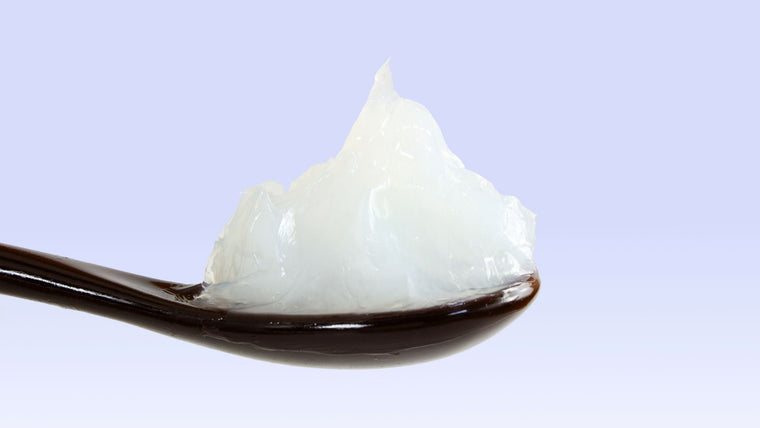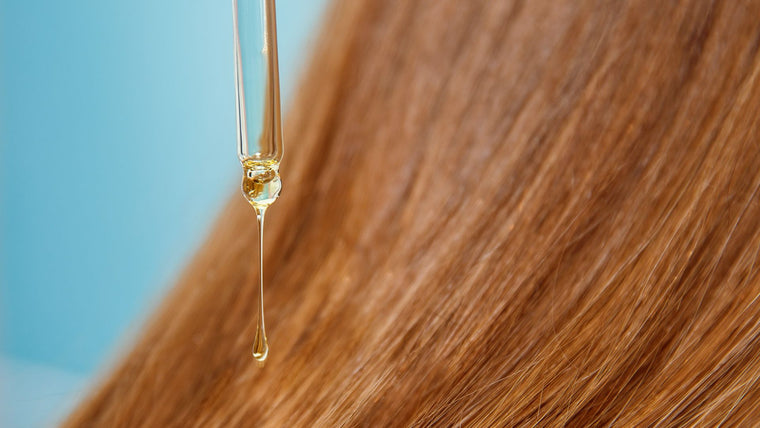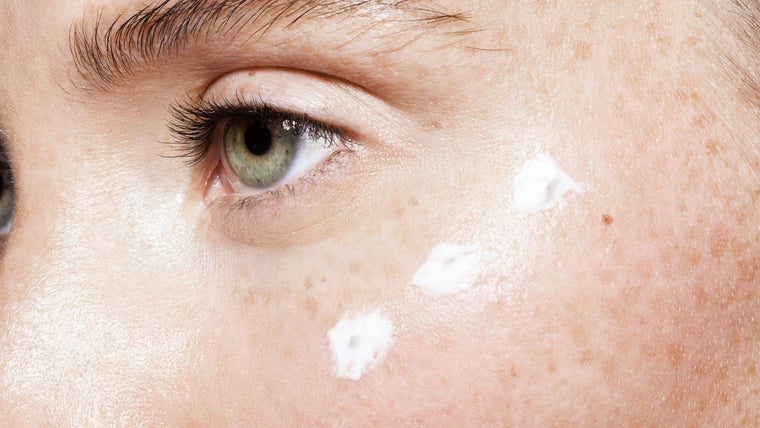Your Beginner's Guide to All Things Retinol for Skincare
- 05/05/2023
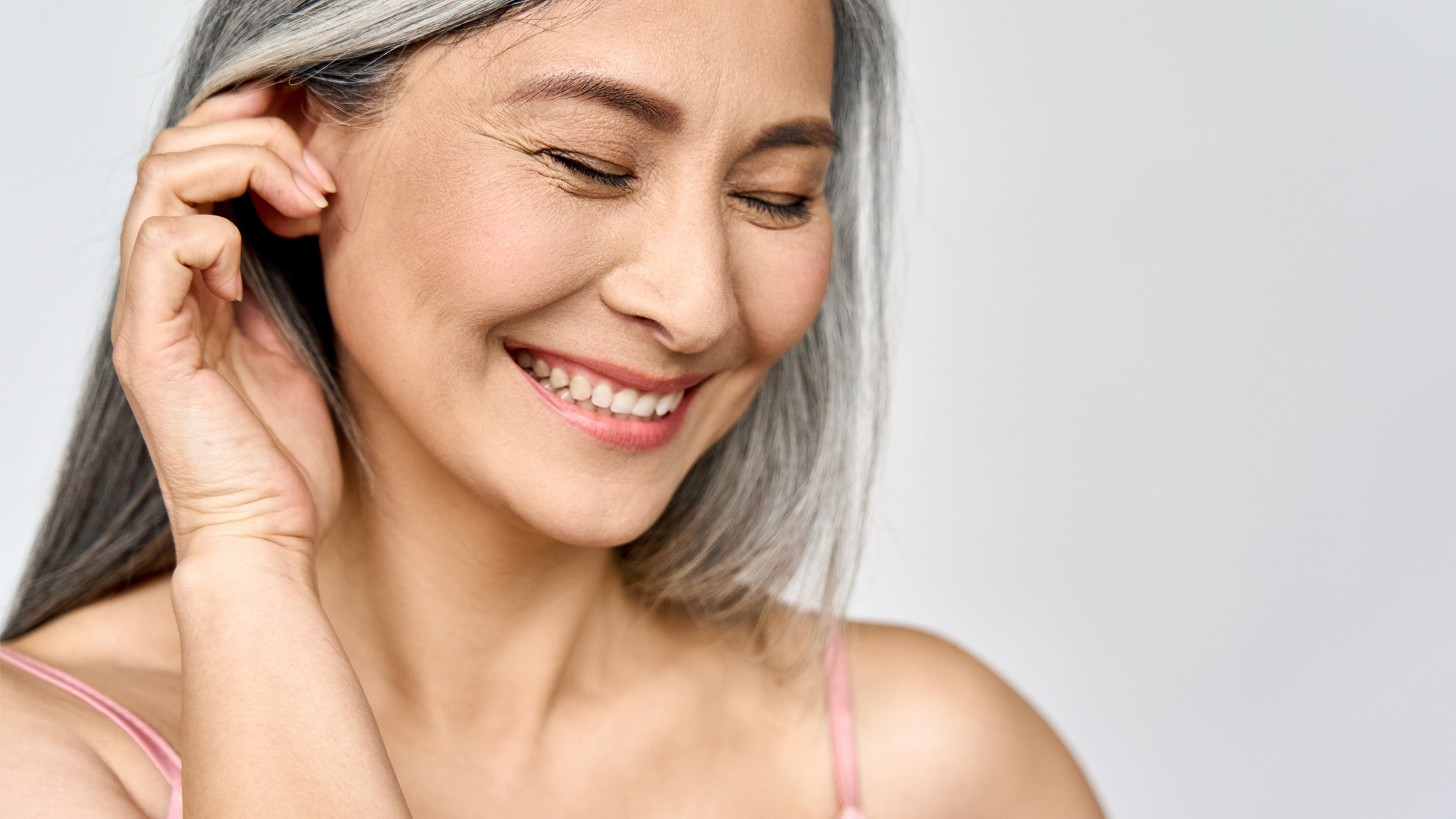
Retinol. Or is it retinyl? But you've also seen the term “retinoids", and now you don't know where to begin when it comes to this ingredient that you've seen and heard about everywhere.
If you're reading this, chances are you've already done some research into retinol and are ready to reap its anti-aging benefits. But with an overabundance of information and a myriad of terminology that you're not familiar with, it's hard to get clear answers.
Want to add this active to your routine but don't know where to start? Read on, because we're about to break down everything you need to know about retinol.
Navigating retinoids
There's a lot to say about retinol, but in short, it's a skincare active derived from vitamin A. This vitamin is naturally produced in the body, and its main function is to help cells regenerate.
In the skincare world, it's known by many names—retinyl, retin-A, retinol—but these names aren't exclusive. In fact, these are all names for different types of retinol that are derived from retinoids. Retinoids make up the base structure of all retinol subtypes, and while their benefits aren't identical, at their core they all have the same goal: rejuvenation.

Retinol is a key player when it comes to boosting cell turnover, so if you want smooth skin, any retinol product will get the job done. But what are the differences between its many forms, and how exactly do they work?
"Retinoids work by increasing collagen production as well as increasing the rate of skin cell turnover," says Shari Marchbein, M.D., a board certified dermatologist based in New York.
The beauty industry has a bad habit of referring to all retinoid derivatives as "retinol", but they all play different roles when it comes to your skin's health.
Retinol
Probably the most famous of all retinoids, retinol is the derivative you're most likely to see when browsing your favorite beauty aisle. It's a specific type of retinoid, and it's popular because of its slew of anti-aging benefits. It speeds up cell turnover, improves skin texture, and defends against signs of aging like fine lines and wrinkles—plus, it strengthens the skin barrier.

Sounds pretty great, right? If you're wondering why you've not included this in your beauty regime sooner, it's because retinol can be harsh on skin, especially if yours is sensitive. Don't get us wrong, all retinoids have the capability to cause unwanted sensitivity and side effects, but retinol sits bang in the middle of the scale when it comes to the ability to irritate.
With side effects a common occurrence, retinol needs to be approached with care, but we'll get to this later.
Retinyl palmitate
If you're looking for something a bit gentler, retinyl, or retinyl palmitate, is your best port of call. Out of all retinoid derivatives, this form is best for sensitive skin and those who aren't looking for the hardcore punch that stronger retinoids offer.
Retinyl isn't as straightforward as retinol, as it requires a conversion process. We know it sounds complicated, but it's not as confusing as it sounds. When retinyl is applied, enzymes in the skin break it down and convert it into retinoic acid, which is what your body needs if pristine skin is the goal.

This conversion process is what makes it more kind on skin, and it's rare to experience the same kind of side effects that harsher retinoids can cause. But there are two sides to every coin—retinyl's effects aren't as immediate as say, a direct retinoic acid's, so you'll probably need to wait a bit longer until you start to see its glow-boosting effects.
Everyone's skin reacts differently, and we always recommend a patch test no matter how gentle an ingredient may appear, especially when it comes to retinoids.
Retin-A
On the scale of results to side effects, retin-A takes top prize for both. It's considered one of the harshest—and most efficacious—retinoids out there, and it's clear to see why.
Some forms of retinol are only available by over-the-counter, like retin-A—commonly referred to as tretinoin or tret—and prescription retinoids require a recommendation from a doctor or board-certified dermatologist.

This prescription retinol is most often used as an acne treatment due to its pure retinoic acid composition. It requires consistency and patience, and the side effects can be quite formidable (think peeling, burning and overall skin irritation). But with patience comes great reward: users who stick it out will enjoy smoother skin, better texture, faster cell regeneration (hello, glow!), and a host of other benefits.
On the list of acne-fighting ingredients, this is a sure winner, but its prescription form means that it's one of those skincare products that requires constant professional supervision, and it's definitely not for everyone. If you suffer from sensitive skin, we'd recommend sticking to one of the gentler retinoid derivatives.
The benefits
Now that we've covered the most popular retinoids, it's time to delve into the fun stuff: skin benefits! As discussed earlier, how your skin responds to retinoids depends on your preferred form, but the list of benefits is pretty extensive.
In its lesser-known days, retinol was geared toward more mature users, as its main job includes combating fine lines and wrinkles, firming sagging skin, and fading age-related dark spots. But it's recently remade its debut in the skincare world as an active for any skin type, age and concern due to its myriad of rejuvenating benefits.
Here's a list of retinol's best benefits:
-
Reduces fine lines and wrinkles
-
Improves uneven skin tone and texture
-
Exfoliates dead skin cells
-
Treats acne
-
Boosts collagen production
Honorable mentions include clearing clogged pores, balancing sebum, and brightening dull skin—retinoids fade hyperpigmentation, too.
Introducing retinoids into your routine
Creams, serums, gels, cleansers. Retinol is one of those ingredients that comes in many forms, so finding the right product for your skin type shouldn't be too hard... right?

New brands and products crop up everyday, and navigating how to slot retinol into existing skincare routines can feel more like work when it should be fun—after all, who doesn't like getting their hands on a shiny new skin booster? So you can stress less, read on to find out how and when to use retinol.
The how
If you've never used retinoic acid before, or if you're new to using retinol products, “low and slow” is the recommended approach for introducing these actives to your routine. Start by using a retinoid once a week, then gradually increase the frequency over a few weeks to build up your skin's tolerance. Once your skin has acclimated, you'll be able to use it once a day.
Application depends on the type of product you pick but, for serums and creams specifically, there are a couple of steps you can take to minimize side effects.

Start by applying a pea-sized amount in a thin layer to the desired area. You can apply it as a spot treatment to combat specific skin concerns like dark spots or acne but, for best results, apply it to your whole face to reap its anti-aging benefits.
There are some ingredients retinol doesn't play well with, and you should avoid using it with other powerful actives like vitamin C, as this can increase the chances of skin sensitivity.
The who
While it provides indisputable skin benefits, retinol is known to cause skin irritation, and not all skin types are able to tolerate it. It's important to find the best products for you and introduce them to your routine gradually.
If you have super-sensitive skin, it's best to seek out a product with a low concentration in a gentle format, like a cream. Finding a product that adds soothing ingredients (like aloe vera or anti-inflammatory plant extracts) which can buffer some of its harsher effects is a bonus.

Why not give our Retinol Cream a go? It features a gentle 2.5% pure retinol concentration, and we've added soothing extracts like sea oak and centella asiatica to calm the complexion while it gets to work. If that's not enough to convince you, our addition of hydrating hyaluronic acid helps to double retinol's collagen boosting effects.
Or you can look for a gentle cleanser with a mild retinol form, like retinyl palmitate, if that's more your style. For more specific skin concerns like dry skin, look for hydrating formulas (like a hyaluronic acid serum) that add retinol for more hard-hitting hydration.
With this in mind, it's important to note that pregnant women should talk to a doctor before adding a more heavy-hitting active like retinol to their routine. To sum up, (almost) anyone can use retinol, but if you're ever in doubt, seek out professional advice.
What age should I start using retinol?
Retinoic acid is lauded for its ability to combat signs of aging like fine lines and wrinkles, so you're likely to see it featured in anti-aging serums and creams. It also has an extraordinary ability to boost collagen—plumping skin and bringing it back to its youthful prime. But as we've mentioned, it's able to address a slew of non age-related skin concerns.
If your goal is to prevent signs of aging before they appear, it's never too early to add it to your beauty cabinet. If you've noticed that your skin has started to sag, or if that one stubborn wrinkle now has a friend, finding a good retinol product will set you in the right direction.
The when
Derms and beauty gurus alike recommend using retinol before bed, as skin can shed cells faster at nighttime when it has time to rest and repair itself. Retinol also increases sun sensitivity more than any other skincare ingredient out there, and using it in the daytime can often have unintended consequences.
That's why it's not only recommended, but imperative, to use a sunscreen in the morning, even if you're not applying retinol in the daytime.
In terms of steps, you'll want to apply it as one of the last steps in your skincare routine, after cleansing and moisturizing. There are ways of getting the most out of your retinol depending on your specific skin type and concern.

If you have oily skin, use a Salicylic Acid Cleanser to clear any gunk out of pores before applying retinol. For those with acne prone skin, using a cleanser with benzoyl peroxide will help to prime skin for retinol's blemish-fighting abilities—why not try our Benzoyl Peroxide Cleanser?
As you can see, there aren't a lot of rules when it comes to incorporating retinol into your routine, but the most important one to follow is using an SPF product in the daytime (and we mean a proper SPF, not that day cream with an SPF of 15 ).
To summarize...
We know that approaching retinoids can be overwhelming, but we hope that this guide helps you to find your perfect retinol product and incorporate it safely into your routine with minimal side effects.
If you're still searching for your perfect fit, give our Retinol Serum a try. Like its cream counterpart, it features a 2.5% pure retinol concentration, so if you prefer thinner textures over a heavier feel, you'll love this quick-absorbing serum.

Our formula is buffered with antioxidant green tea, which combats redness and irritation, while added phospholipids "feed" skin ceramides to repair its barrier. And don't forget the sunscreen!


